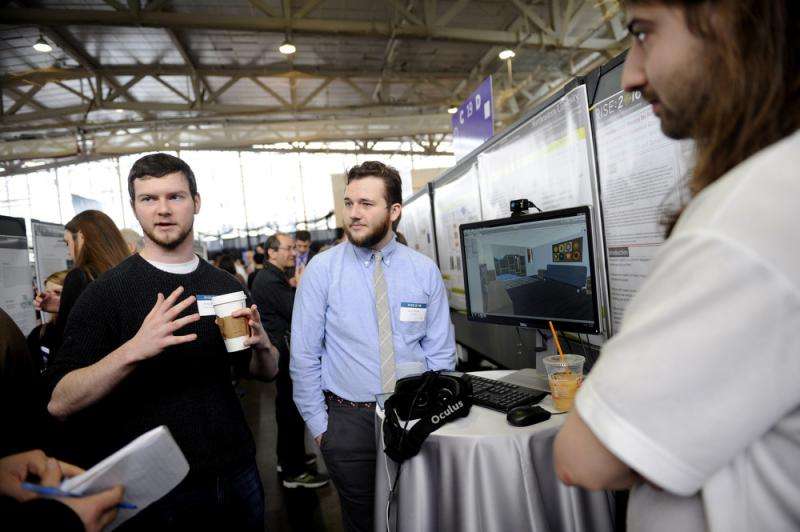The gamification of rehabilitation

Peter Scannell, E'16, is one of five student engineers working to harness the power of the Oculus Rift virtual reality headset to help stroke patients overcome hemispatial neglect. Also called unilateral visual inattention or hemi-inattention, it's a neuropsychological condition preventing stroke victims from perceiving stimuli on one side of their body or environment.
"We want to gamify the process of rehabilitation," Scannell explained at RISE:2016, where the engineers-in-training demoed a prototype of a game integrating the virtual reality headset and a body motion tracking system.
Here's how it works: Apply the headset, move your head to locate cabinets and drawers to your left, to your right, and in front of you, and then use your hands to open them.
Said team member Jesses Michel, E'16: "Right now, you can do a lot of useful things with the Oculus Rift, especially in terms of physical therapy and brain exercises."
Under the direction of Waleed Meleis, an associate professor in the Department of Electrical and Computer Engineering, the students conducted a needs assessment with physical therapists at the Spaulding Rehabilitation Hospital in Boston. The next step is to conduct a pilot test with a small sample of adults with hemispatial neglect to determine the efficacy of their VR interface.
"The goal is to help make physical therapy for hemispatial neglect more engaging and more applicable," said Michel.





















